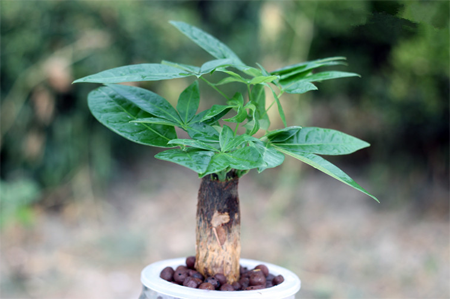Cutting method of Gardenia jasminoides
Gardenia is a kind of flower that everyone is familiar with. It is widely distributed in China. Many local parks can be simple gardenia figure, in fact gardenia not only for ornamental use, but also a certain edible and medicinal value. Gardenia is now planted in China are also very many people, planting Gardenia when its propagation methods are mainly cuttage propagation, seeding propagation and layering propagation methods. Today's small series to introduce you is the cutting method of gardenia.

1. Branch preparation
The preparation of branches is the first step of cuttage and a very important step, because the quality of branches directly affects the survival rate and the growth ability after survival. First of all, we should choose gardenia trees with long growth years, strong and no diseases and insect pests as mother plants. Then choose strong growth, stout branches as cuttings, not to choose branches damaged by pests. Then cut the branches from the base and cut them into about 18 cm cuttings. Cut the base of cuttings obliquely at about 45 degrees, soak them in rooting water for about 10 minutes, and then take them out to dry and wait for cuttings.
2. Matrix preparation
After preparing the cuttings, of course, it is necessary to prepare the cutting substrate. Gardenia is suitable for growing in acidic soil, so pay attention to pH value when selecting the substrate. It should not be neutral or alkaline, otherwise the survival rate of cuttings will be very low. Then ensure that the substrate is fertile, permeable and irrigated properly. If it is potted, then pay attention to the choice of pots, the best choice is ceramic pots, because the permeability of ceramic pots is relatively strong, which is conducive to rooting, and the price is relatively affordable, which can reduce planting costs.
3. Timely cuttage
Cuttings as far as possible in the plant has not yet bloomed when preparing branches, because this time branches nutrition is very rich, rooting rate is higher. After doing all the preparatory work, control the cutting density and insert the cuttings vertically into the substrate, and keep the depth at about 5 cm. Then cover it with fine soil and compact it, so that the base of the cuttings can fully contact with the soil, and then irrigate with water to promote the rooting of the cuttings. After watering, management should be strengthened, and proper topdressing should be applied to meet nutritional needs. Water insertion can also be carried out, and the survival rate of water insertion is close to 100%. Water insertion is generally carried out in May to June every year. Keep two leaves at the top of the cuttings and insert them into the water. Pay attention to changing the water to prevent the water quality from deteriorating and cause the base to rot. After about 20 days, they can take root.
4. Precautions
When cutting the base of the branch, pay attention to one time to ensure that the wound is smooth, so that it can fully contact the soil, enhance the nutrient absorption capacity, and improve the rooting rate. After cutting, we should pay attention to temperature management, and the temperature should be kept at about 15 degrees. If the temperature is too high, it will affect the rooting of cuttings, leading to rot of flower roots and reducing the survival rate. And to keep the soil moist, the matrix after whitening should be watered in time to prevent lack of water caused by the death of cuttings, and water is the key to ensure the normal growth of Gardenia. And also pay attention to do a good job of topdressing, fertilizer is mainly decomposed farm manure, pay attention to the amount of fertilizer used, prevent improper topdressing caused gardenia leaves appear yellowing and blackening phenomenon.
The above is a simple introduction to gardenia cutting methods, gardenia propagation methods have many kinds, cutting propagation is mainly used for family ornamental propagation. Today's introduction is here, this article is for reference only, if you want to know more related information, please continue to pay attention to us!
- Prev

How much does a yellow tree cost?
Fortune tree is a very auspicious tree, all called fortune tree, meaning that as long as you have this tree at home, it means that your family will make a fortune, everyone hopes it is like this, but your family raises a fortune tree, always raise it until the leaves turn yellow, what is the reason? Is the tree expensive? not expensive
- Next

The Cuttage Propagation method of crape myrtle
The Cuttage Propagation method of crape myrtle
Related
- Fuxing push coffee new agricultural production and marketing class: lack of small-scale processing plants
- Jujube rice field leisure farm deep ploughing Yilan for five years to create a space for organic food and play
- Nongyu Farm-A trial of organic papaya for brave women with advanced technology
- Four points for attention in the prevention and control of diseases and insect pests of edible fungi
- How to add nutrient solution to Edible Fungi
- Is there any good way to control edible fungus mites?
- Open Inoculation Technology of Edible Fungi
- Is there any clever way to use fertilizer for edible fungus in winter?
- What agents are used to kill the pathogens of edible fungi in the mushroom shed?
- Rapid drying of Edible Fungi

